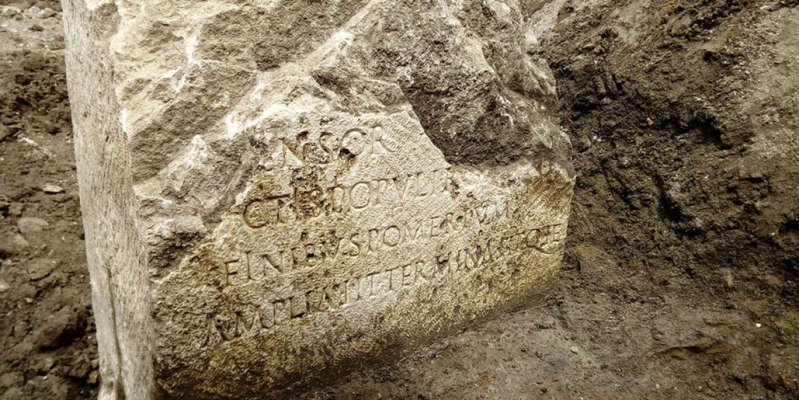
A sacred stone from the time of the emperor Claudius was found in Rome
Builders excavating in the historic center of Rome discovered a huge stone. Historians have determined that it defined the boundaries of the city 2,000 years ago, reports Live Science.
The so-called Pomeranian stone, or “kippus”, was made from fine limestone called travertine. Its height reached almost two meters.
This is one of dozens of stones that marked the Roman “pomerius” – a sacred area on both sides of the city wall, where it was forbidden to build houses, engage in agriculture, bury the dead and carry weapons. This strip of land separated Rome from the outskirts.
The first pomery was created by the legendary founder of Rome, Romulus. In the eighth century BC, he marked the boundaries of the future capital of the empire by drawing a furrow in the ground. Legend says that his twin Remus jumped over the furrow. Romulus was so angry that he killed him.
Archaeologists have unearthed about ten stones marking the boundaries of the Pomeria. But the last find of this kind was made over a hundred years ago. Therefore, the new news aroused great interest in the scientific community.
The inscription on the stone says that it was installed in about 49 AD. e., during the time of Emperor Claudius. He expanded the boundaries of the city, including, in particular, the Champ de Mars.
Historians believe that the concept of a sacred border around the city originally originated with the Etruscans, who previously lived on these lands and had a significant impact on the Romans. Later, the pomerania acquired a special legal status – for example, magistrates, known as “plebeian tribunes”, had the power to intervene in political affairs during the Republic only within the city boundaries, and delegations from the enemies of Rome could not cross this line without the explicit consent of the Senate.
Earlier it was reported that the likely tomb of Romulus himself was found in the center of Rome. It was located under the Roman Forum.

